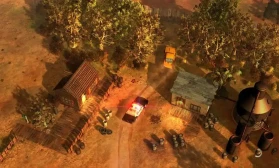Clash Royale: Real-Time Card Battles – A Critical Review
Introduction
Clash Royale, developed by Supercell, is a real-time multiplayer strategy game that combines elements of tower defense, collectible card games (CCG), and MOBA (Multiplayer Online Battle Arena). Since its release in 2016, the game has amassed millions of players worldwide, thanks to its fast-paced gameplay, strategic depth, and competitive nature. However, despite its success, Clash Royale has faced criticism regarding its monetization model, balance issues, and repetitive gameplay. This review critically examines the game’s strengths and weaknesses, evaluating its mechanics, player experience, and long-term appeal.
Gameplay Mechanics: Fast-Paced and Strategic
At its core, Clash Royale is a real-time PvP (Player vs. Player) game where players deploy troops, spells, and buildings to destroy their opponent’s towers while defending their own. Each match lasts three minutes (or longer if overtime is triggered), making the gameplay intense and highly engaging.
Card System and Deck Building
The game features over 100 cards, each with unique abilities, strengths, and weaknesses. Players must construct an 8-card deck, balancing offense and defense. The strategic depth comes from synergies between cards, counterplay mechanics, and adapting to opponents' strategies mid-battle.
Pros:
✔ High Skill Ceiling – Mastering timing, placement, and resource management separates casual players from experts.
✔ Variety of Playstyles – Players can experiment with different archetypes (beatdown, control, siege, etc.).
✔ Quick Matches – The short duration makes it ideal for mobile gaming.
Cons:
❌ Pay-to-Win Concerns – Card upgrades require significant time or money, giving paying players an advantage.
❌ Meta Dominance – Certain cards become overpowered due to balance patches, reducing diversity.
Monetization Model: Free-to-Play or Pay-to-Win?
Clash Royale follows a free-to-play model with in-app purchases (IAPs). Players can buy gems, chests, and gold to accelerate progress. While the game is technically playable without spending, progression slows drastically at higher levels.
Key Monetization Issues:
- Loot Box Mechanics (Chests) – Players must wait hours (or pay) to unlock chests, artificially slowing progress.
- Card Level Disparity – High-level players with maxed-out cards dominate lower-level opponents, creating frustration.
- Season Pass & Microtransactions – While the "Royale Pass" offers value, constant promotions push players toward spending.
Verdict:
While Supercell has made efforts to improve fairness (e.g., Trophy Road rewards), the game still favors paying players, which can deter free-to-play users in the long run.

Balance and Meta Shifts: A Double-Edged Sword
Supercell frequently updates Clash Royale with balance changes, new cards, and events. While this keeps the game fresh, it also leads to instability in the meta.
Pros of Frequent Updates:
✔ Keeps the Game Fresh – New cards and balance tweaks prevent stagnation.
✔ Community Engagement – Players discuss strategies and adapt to changes.
Cons of Frequent Updates:
❌ Unpredictable Meta – Some cards become useless overnight, frustrating players who invested in them.
❌ Power Creep – Newer cards often overshadow older ones, forcing players to constantly adapt.
Competitive Scene: Thriving but Flawed
Clash Royale has a strong esports presence, with official tournaments like the Clash Royale League (CRL). However, competitive play suffers from:
- RNG Elements – Chest rewards and matchmaking luck can influence rankings.
- Limited Spectator Appeal – Unlike MOBAs or FPS games, Clash Royale lacks visual spectacle for casual viewers.
Despite these issues, the game remains popular in the mobile esports scene, with high-stakes tournaments and dedicated players.
Player Retention: Is the Grind Worth It?
One of Clash Royale’s biggest challenges is retaining players long-term. The initial climb is exciting, but the grind for card upgrades and trophies becomes exhausting.
Why Players Quit:
- Repetitive Gameplay – Matches can feel samey after hundreds of battles.
- Frustrating Losses – Losing due to card level differences rather than skill is demoralizing.
- Lack of Major Innovations – While new modes (e.g., 2v2, Party Modes) help, core gameplay remains unchanged.
Final Verdict: A Fun but Flawed Masterpiece
Clash Royale is a brilliantly designed game that excels in fast-paced strategy and competitive play. However, its monetization model, balance issues, and repetitive nature hinder its long-term appeal.
Rating: 7.5/10
✔ Pros: Engaging gameplay, high skill ceiling, strong esports scene.
❌ Cons: Pay-to-win elements, frustrating progression, meta instability.
Who Should Play It?
- Fans of strategy and card games.
- Players who enjoy short, competitive matches.
- Those willing to invest time (or money) into progression.
Who Should Avoid It?
- Players who dislike grind-heavy games.
- Those frustrated by pay-to-win mechanics.
- Gamers seeking deep narrative or single-player content.
Conclusion
Clash Royale remains one of the best real-time strategy games on mobile, but its flaws prevent it from being truly perfect. With better balancing and fairer monetization, it could reach even greater heights. For now, it’s a thrilling yet imperfect experience for competitive gamers.
Tags: #ClashRoyale #MobileGaming #StrategyGames #GameReview #Esports #Supercell #CardGames #PvPGames












